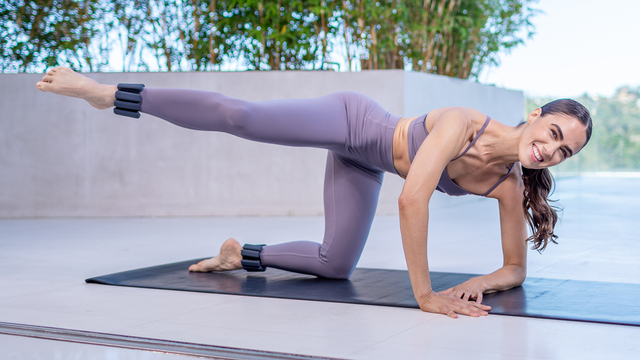Monitoring our fitness progress is a crucial method to stay inspired, identify areas for growth, and acknowledge our accomplishments, whether it's gaining muscle, losing weight, or just becoming healthier this year. How to track workout progress: the most crucial factor is how successfully you continue to meet your exercise and health objectives. Ten crucial methods for efficiently monitoring your fitness progress will be discussed in this article. To make sure your fitness journey is moving quickly and you get results, you need to be aware of these stages.
Reasons to Monitor Your Progress
As with any objective, you should monitor your progress to guarantee the finest outcomes. You could believe that lifting a bigger weight the next time you work out is sufficient proof that you are progressing in building strength.
However, without knowing how many sets, repetitions, and weekly exercises you are completing, it is difficult to gain a comprehensive picture of your development. Periodization, or organizing and monitoring your training regimen throughout time intervals that change objectives and methods, is one of the most important components of any well-designed strength training program.
In order to avoid overtraining and improve outcomes, this also involves scheduled de-load intervals.21For example, before beginning a phase of muscle growth, muscular endurance, or fat reduction, a deload may be performed after a strength training phase.
How to Monitor Your Development
Understanding how to monitor your strength training progress is crucial for making any necessary adjustments to continue pursuing your objectives. Here are some essential methods to do it.
Maintain a Log of All Your Training Sessions
Recording your training sessions is the best method to monitor your development. Although it makes sense to plan your sessions in advance for the anticipated sets, repetitions, and weights you will try to lift, this information is frequently derived from prior training sessions.
Because of this, recording your exercises is essential to your performance. Even while you might not always achieve your goals, understanding what you did do can help you improve for your next workout.
1. Pay attention to your heart rate.
![]()
Monitoring your heart rate can provide important information about the intensity of your workouts and cardiovascular health. This can help you detect any variations in your resting heart rate over time and make sure you're exercising at the proper intensity.
Read also: Workout To Improve Vertical Jump
2. Look for Expert Fitness Advice (How To Track Workout Progress)
Consider getting expert advice from a personal trainer or fitness facility if you're unclear how to monitor your fitness improvement. Our goal at Slam Fitness is to support you on your fitness journey. We offer guidance and assistance all along the way.
3. Tracking your fitness progress requires proper nutrition.
It's critical to monitor your diet because it has a significant impact on your fitness development. This stage can assist you in pinpointing areas where your diet needs to be improved and guarantee that you're getting adequate nutrients to help you monitor your fitness progress.
4. Monitor the Quality of Your Sleep
Sleep is the most crucial factor for the body's recuperation and general well-being. Make sure you get at least 7 to 9 hours of sleep every night, and see how your energy levels and workout performance are impacted by the quality of your sleep.
5. Take pictures of your progress.
![]()
One of the finest methods to visually document your fitness journey is using progress images. Take pictures of yourself once a week or once a month, using the same lighting and pose. The actual changes in your fitness journey are visible.
Read also: 20-minute Cycling Workout: Maximize Your Fitness
6. Establish SMART objectives. (How To Track Workout Progress)
Effective monitoring requires setting SMART (Specific, Measurable, Achievable, Relevant, Time-bound) goals. This clarity will make it easier for you to concentrate and monitor your fitness progress.
7. Keep an eye on your energy levels.
Monitoring your energy levels over the day might provide you important information about how fit you are getting. Consistently feeling more energized might indicate that your workouts are having an effect.
8. Make Use of a Fitness App
Here's one method for using fitness apps to monitor your progress. The majority of the applications allow you to track your meals, calories burnt, and exercises. The majority of these applications let you monitor your progress on a graph or chart, which makes it easy to keep going.
Read also: Benefits Of Strength Training
9. Calculate Body Measures (How To Track Workout Progress)
Monitoring your weight, body fat percentage, and measurements (chest, hips, waist, etc.) can provide you a more comprehensive picture of your fitness development.
Measuring these measurements on a regular basis allows you to observe improvements that might not be visible on the scale, particularly if you're shedding fat and gaining muscle.
10. Maintain an Exercise Log
A straightforward yet effective method of tracking your fitness development is to keep an exercise notebook. Keep track of the exercises, sets, repetitions, and weights you utilize during your workouts.
It compels you to take responsibility at all times, and let's review your current situation at the conclusion. Aside from that, it might be a great chance to reflect on your journey and realize how far you've come.
11. Assess Your Capabilities
Planning your strength phase to incorporate frequent strength testing is the greatest approach to determine whether you're growing stronger. Testing your one-repetition maximum (1RM) is one of the finest and most accurate ways to do this.6. The best way to monitor your strength training development is to test your one-rep maximum once a week or once a month.
Read also: The Ultimate Arm Workout for Women at Any Level
12. Clothes (How To Track Workout Progress)
What is the fit of your clothes? Clothing is a reliable indicator of changes in body size and form. Your shirts will fit more snugly if you're building muscle in your upper body.
Your jeans may start to feel a little large if you're losing weight around your midsection. You're headed in the correct direction if you eventually find yourself using a smaller belt notch.
As your body changes, you'll also begin to get remarks about how different you appear from friends, family, and coworkers. When these remarks are directed at you, pay attention to them; even if you don't think you're making any improvement, others are, and that's fantastic!
A Remark From Verywell
Anyone who wants to improve their everyday functioning, avoid age-related strength loss, and boost their confidence should perform strength training. Monitoring your training sessions and progress over time is essential if your goal is to grow stronger in order to make sure you are headed in the correct direction.
You should see a personal trainer for advice if nothing seems to be working. Additionally, remember that big changes take time to manifest.
Achieving these objectives requires patience, perseverance, consistency, and devotion. You can benefit from one or two sessions with a professional personal trainer if you are struggling to get started.
conclusion on How To Track Workout Progress
Maintaining motivation, assessing progress, and achieving your fitness objectives all depend on keeping track of your workout progress. You may track important variables like strength growth, endurance, weight changes, and general performance with the use of tools like exercise notebooks, fitness applications, or wearable technology.
Reviewing your progress on a regular basis holds you accountable and helps you determine what is working and where changes are required. Keep in mind that development involves more than simply statistics; it also involves your feelings.
Remain consistent, acknowledge little accomplishments, and don't let sporadic failures deter you. You may take charge of your fitness journey and keep going one step at a time toward success by keeping track of your routines.
FAQs: How To Track Workout Progress
How do I track my fitness progress?
-
Journaling. The simplest way to track your progress is to keep a fitness journal.
-
Fitness Tracking Apps. Another way to track your fitness is to use a fitness tracker app.
-
Take Progress Photos.
-
Measure Yourself.
-
Let Your Clothes Guide You.
-
A Friend.
How do I track my fitness activity? (How To Track Workout Progress)
-
On your phone, open the Google Fit app.
-
Tap Add Track workout.
-
To select the activity you're about to start, tap the down arrow.
-
Tap Start workout. If you're riding a bike, carry your phone in your pocket. Tracking will be more accurate than if your phone is mounted or in a backpack.
How many sets per workout should you do? (How To Track Workout Progress)
Just one to five sets per muscle each week can help you gain muscle. Two full-body exercises a week would take care of it. You might perform two to three sets of each complex exercise. You might perform 1-2 sets of each solitary exercise and still have good results.
Does the Lose Weight in 30 Days app work? (How To Track Workout Progress)
Fantastic, but it requires more downtime. For the first two weeks or so, this app was fantastic. It became just one more thing to do before bed, and I was able to stick to the plan rather well. During that period, my core also became much tougher.
How long should a workout be? (How To Track Workout Progress)
Depending on the individual, their objectives, their tastes, and the type of exercise, the optimal workout length might vary greatly. Sessions of 45 to 60 minutes may be adequate for bodyweight strength training and weightlifting. Meanwhile, 30 to 60 minutes may be the ideal duration for calisthenic and cardiovascular exercise.







